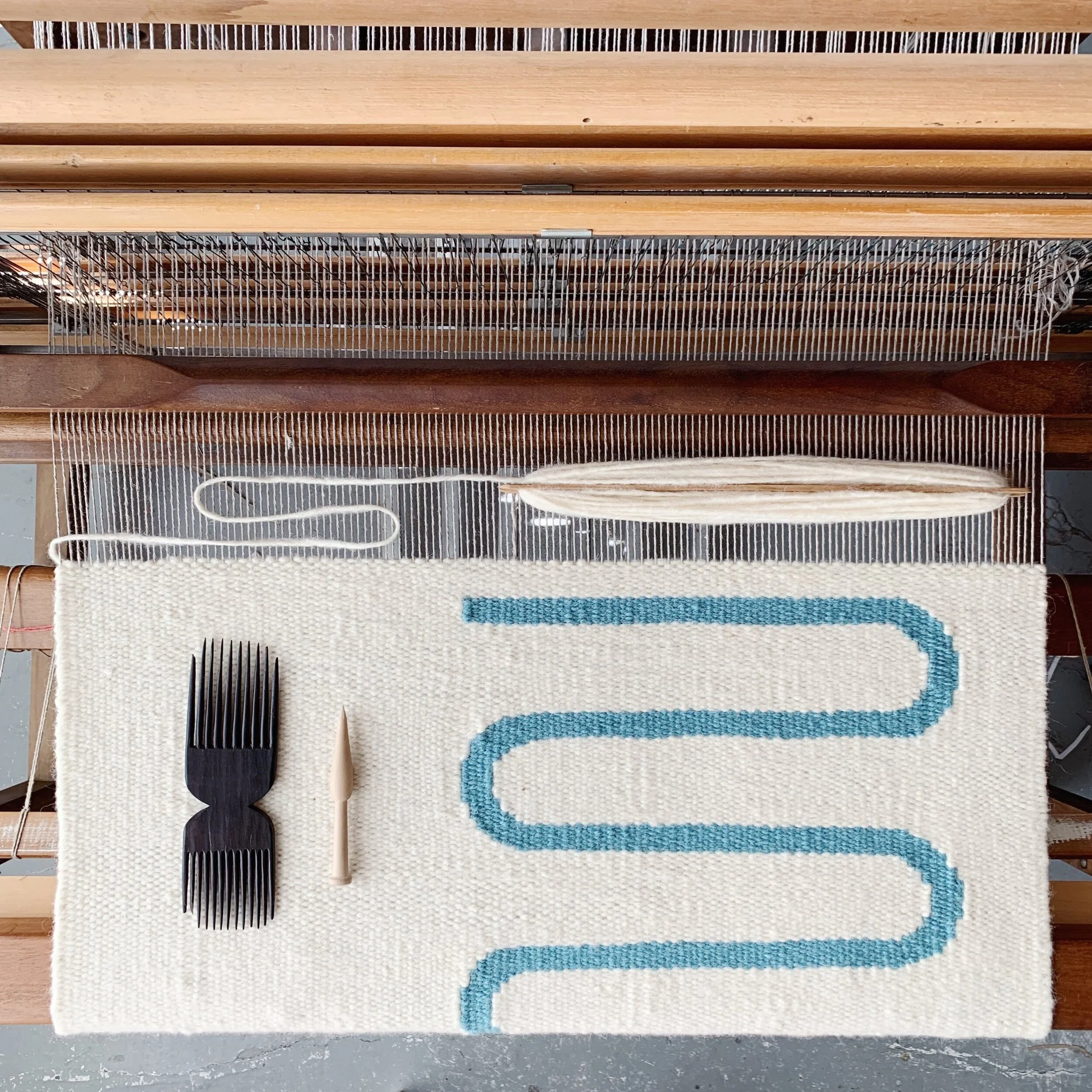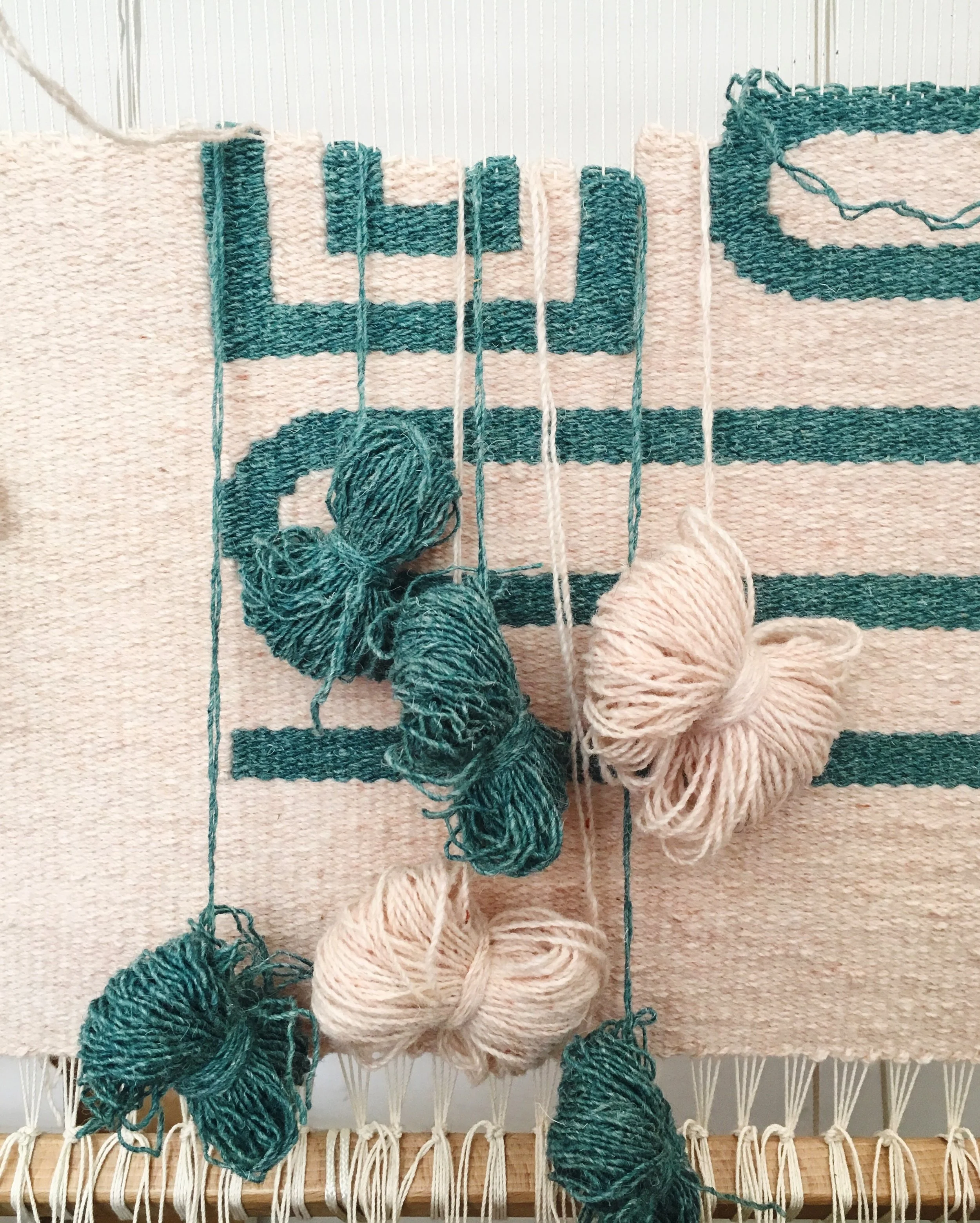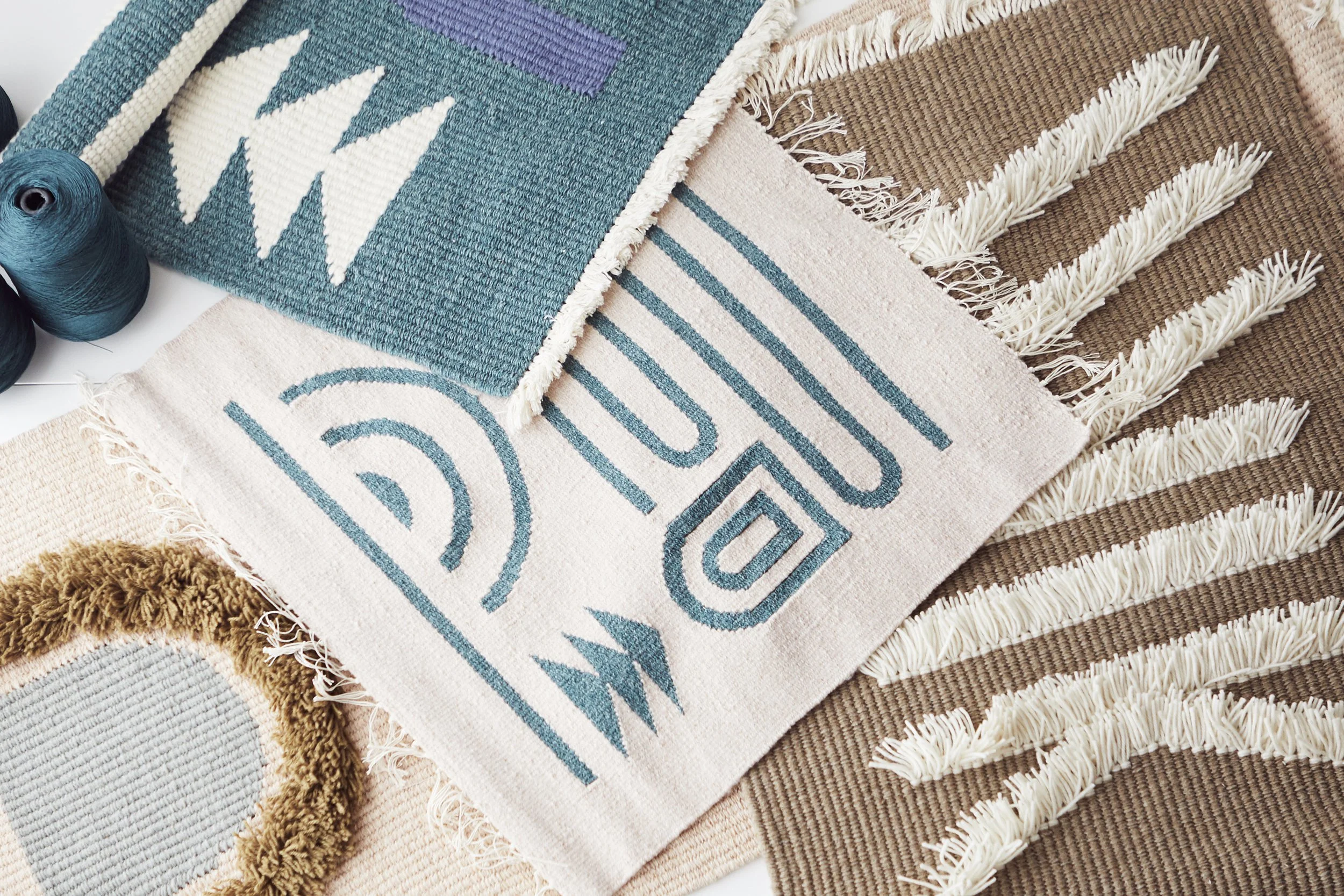What's The Difference Between Tapestry And Rug Weaving?
One of the most common questions I’ve had over the years as a weaver and teacher is “so… what’s actually the difference between weaving a tapestry and weaving a rug?”
At first glance, it seems fairly obvious. One goes on the wall, the other on the floor, right?
However, when you dig into how tapestries and rugs are made, it starts to get confusing. In this blog post, I’m going to cover the key similarities and differences between tapestry & rug weaving, and what you need to think about to weave each one really well.
A wall-hanging I wove that also works as a rug!
Tapestries & Rugs Are Doing Similar Things
Throughout human history and in the present day, wall-hangings and floor-coverings have served similar purposes. They both insulate rooms and soften the acoustics. They both brighten up space with pattern and colour. They both allow flexibility, allowing for a change in decor without changing the carpet or painting the walls.
Whether you’re coming to weave a tapestry or a rug, it’s worth thinking about how it will function when it comes off the loom. Do you want it to be soft and soothing or bright and exciting? How will it affect the space where it is hung or laid?
Tapestries & Rugs Use Similar Techniques
As well serving similar purposes, tapestries and rugs are woven using similar techniques. Weavers making textured wall-hangings or tufted rugs will find themselves using the same knotting techniques.
And flat-woven rugs and tapestries are even more alike. They are made by weaving separate areas of different coloured weft yarn to create a pattern or image. This is known as “discontinuous weft” and is seen in both tapestry weaving and rug weaving around the world.
The great news about this is that you can easily transfer your skills in one area over to another! Once you’ve mastered tapestry weaving, it’s relatively straightforward to switch over to rug weaving, and vice versa.
However, while rugs and tapestries have a lot in common, there are crucial ways in which they are different.
Tapestry & Rugs Face Different Pressures
Both tapestries and rugs face different pressures in daily use and display.
Tapestries are often more prone to sun damage and fading, being hung on the wall near windows, and their hidden folds can attract moths.
Rugs, on the other hand, are much more in danger of wear and tear. Dirt can find its way into the fibres, and as this gets ground in under foot it wears away at the fibres and causes it to fray. Rugs can also suffer from moth damage, as moths are drawn to areas where food has been spilt.
So, how can you as a weaver prepare for the challenges your rugs & tapestries will face?
Choose The Right Warp
Although it is hidden from view by the weft, the warp is the strong core of your tapestry or rug. Both tapestries and rugs can be made with wool, cotton or linen warps.
But for tapestry, you’re going to want to use a lighter weight warp. If you’re weaving a detailed design, your warps will need to be close together to give you enough material to render your details accurately. Or if you’re weaving a fluffy, textural wall-hanging, you’ll want a thinner warp that can be easily concealed by your roving or chunky yarn.
For rugs, on the other hand, you will need to use a thicker warp. At Balfour & Co we sell an extra-thick rug warp for this purpose, and I also recommend the warps sold at George Weil. And if the warp you want to use is on the thin side, I recommend doubling it up so you’re weaving around 2 strands of warp instead of one.
Choose The Right Weft
Tapestries and rugs can both be woven with wool, and the rug yarn we sell at Balfour & Co is suitable for both.
However tapestries, because they are not underfoot, can be woven with more delicate materials. Silk, finely spun linen, mohair, alpaca and other fibres can all be incorporated into your wall-hangings.
Rugs, on the other hand, must be woven with a tougher wool. Most knitting yarns are not suitable for rug weaving, as the fibres are either not coarse enough. They will often start to pill, and wear away very quickly. For a rug yarn, you are looking for sturdier wool. Our rug yarn, for example, is spun from coarse, durable sheep’s wool and reinforced with nylon for extra durability, And if you want to weave a rug with plant fibres, consider using a heavy-duty fibre like hemp or jute.
Change Up Your Weaving Technique
When weaving a tapestry, your main focus is on rendering the design well. The texture and structure of the weaving, while important, comes second.
For a rug, the structure is paramount. It must be sturdy and solid to withstand the wear and tear of being walked on every day. So when weaving a rug, I recommend beating down the weft as firmly as possible over the warp. The closer packed the weft is, the harder it will be for dirt and dust to work into the fabric of the rug and wear away at the fibres. So don’t be afraid to beat your weft down firmly and make sure it is properly covering the warp.
If you pay attention to your warp, weft and weaving technique, you will be able to weave strong and durable textiles- whether they’re hanging on the wall or lying on the floor.
Here at Balfour & Co, our goal is always to help our customers and students weave whatever they want - and weave it well. Our online courses are designed for both experienced weavers and total beginners. And our rug yarn has been carefully chosen to help you weave tapestries and rugs that will last a lifetime.
If you have any questions about this post or weaving in general, leave us a comment below or email us at info@balfourand.co
Thanks for reading!







